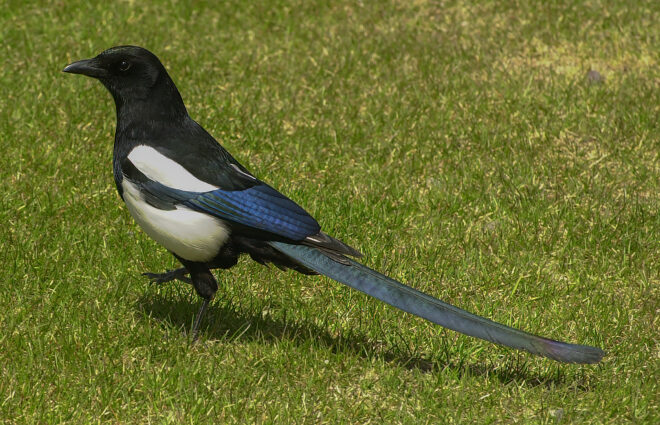Beyond the familiar melodies of their songs and the vibrant flash of their plumage, a hidden intellectual world exists within the avian kingdom. While we’ve long marveled at their navigational prowess and complex social structures, recent scientific discoveries are revealing a surprising capacity for numerical understanding in certain bird species. From the cawing calculations of crows to the parrot’s precise problem-solving, the ability to ‘count’ is no longer a trait solely attributed to humans. We explore the fascinating world of birds that possess numerical cognition, examine the scientific studies that illuminate their remarkable abilities, and challenge our long-held assumptions about animal intelligence.
Crows and Ravens


Recent studies have provided compelling evidence that crows and ravens possess a surprising ability to count through their vocalizations. Researchers discovered that crows can produce a specific number of caws in response to visual or auditory cues. This indicates that they can control their vocalizations to represent numerical quantities. Essentially, they use their caws as a form of vocal tallying.
The studies revealed that the crows don’t just react instinctively. They appear to engage in a level of cognitive planning before vocalizing. Longer reaction times before producing higher numbers of caws suggest they’re mentally organizing and preparing their responses. A pivotal study conducted at the University of Tübingen in Germany demonstrated these incredible numerical abilities. Researchers trained crows to produce one to four caws in response to specific visual (Arabic numerals) and auditory (distinct sounds) cues. The crows successfully learned to associate these cues with the corresponding numbers of caws. The study showed that crows share a form of non-symbolic numerical competence with human toddlers. This research challenges the notion that complex numerical cognition is exclusive to humans, and it highlights the sophisticated cognitive abilities of corvids.


Parrots


Parrots, particularly African Grey Parrots, have demonstrated abilities that suggest they possess a form of numerical competence. This isn’t simply rote memorization but appears to involve some understanding of numerical concepts. Parrots like Alex, the famous African Grey Parrot studied by Irene Pepperberg, were able to vocally label quantities of objects – they could ‘say’ the number of items present. This involved associating a vocal word with a specific numerical value.
Recent studies, particularly with Kea parrots from New Zealand, have shown that they can understand relative frequencies and probabilities. This indicates a more sophisticated understanding of numerical concepts than simply counting. They can make judgments on what jar has a higher probability of containing a reward token.
Parrots are well known for their high cognitive abilities, including problem-solving, memory, and communication. These cognitive abilities likely contribute to their capacity for numerical understanding.


Jackdaws


Recent research has highlighted that Jackdaws exhibit a form of numerical assessment, particularly within their social behaviors, specifically when mobbing predators. Mobbing is a behavior where groups of birds harass predators to drive them away. Research indicates that Jackdaws assess the number of other Jackdaws participating in the mob before deciding to join. They appear to do this by discerning the number of individual Jackdaw calls. The more individual calls they hear, the more likely they are to join the mob. This suggests they are assessing the quantity of participating birds.
Researchers have also played recordings of Jackdaw calls near nests, varying the number of calling birds in the recordings. They observed that playbacks with a higher number of distinct individual calls (simulating more birds participating in a mob) resulted in more Jackdaws joining in. Specifically, playbacks of three or five callers elicited a stronger response than playbacks of a single caller.
The research also showed that Jackdaws can differentiate between individual bird calls. This is crucial, as it indicates they are not just reacting to the volume of calls but to the number of individual birds contributing. A study published in Biology Letters provided strong evidence for this behavior. It detailed the experimental setup and the observed correlation between the number of individual calls and the number of Jackdaws joining the mob.
It is important to note that the research also showed that there may be limitations to this ability. While the birds could differentiate between smaller quantities, their ability to differentiate between larger quantities, such as between three and five, was less clear. This suggests that their numerical assessment may have a threshold.
Magpies


It’s important to clarify that when we discuss counting in magpies, we’re referring to their cognitive abilities rather than their ability to recite numbers like humans. Magpies, as members of the corvid family, are known for their high intelligence, and research has provided evidence of their numerical abilities, but can they count?
Magpies can distinguish between different quantities. This means they can tell the difference between more and less. Studies suggest they can assess numerical values and make decisions based on those assessments. Their ability to handle numerical information is linked to their overall cognitive complexity, which includes skills like problem-solving and memory.
While not directly counting, the famous mirror test conducted on magpies demonstrates their high cognitive functions. This test proved that magpies can recognize themselves in a mirror, which is a sign of high intelligence. This high intelligence is linked to their numerical abilities.
Pigeons


Research has demonstrated that pigeons possess a degree of numerical competence, challenging previous assumptions about their cognitive abilities. Pigeons can differentiate between sets of items based on their numerical quantity. This means they can distinguish between, for example, two dots and four dots. They can learn to associate specific quantities with particular responses or rewards.
Studies have shown that pigeons can understand the concept of ordinality, which is the ability to place numbers in order (e.g., understanding that three comes after two). They can learn to arrange sets of items in ascending or descending numerical order. Like many animals, pigeons appear to rely on an approximate number system, which allows them to estimate quantities rather than perform precise calculations. This system is influenced by factors like the ratio between quantities.
One very important factor that is used to show numerical competence is that pigeons also show the distance effect. This is when they can more readily tell the difference between numbers that are farther apart than those that are closer together. For example, they can more easily tell the difference between 1 and 9 than between 2 and 3. This effect is also seen in humans and primates.
Cormorants


The idea that cormorants count stems primarily from observations of traditional cormorant fishing practices, particularly in regions of China and Japan. Fishermen have long used trained cormorants to help them catch fish. The birds have rings placed around their necks to prevent them from swallowing larger fish. Fishermen retrieve the fish from the birds once they catch them.
Historically, it has been noted that after a certain number of catches (often reported as around seven), the cormorants would become reluctant to continue fishing until they were rewarded. The fishermen would then loosen the neck rings, allowing the birds to catch and eat fish for themselves. This behavior has led to the interpretation that the cormorants are counting their catches.
The work of Egremont and Rothschild, in their study of the cormorants, highlighted the observations of the birds seeming to count the number of fish caught. It’s crucial to acknowledge that this behavior could also be explained by learned associations or a sense of satiation rather than true numerical competence. The birds may be responding to cues from the fishermen or their own internal state rather than consciously counting. While the anecdotal evidence is compelling, more rigorous scientific studies would be needed to prove definitively that cormorants possess true numerical abilities.
Final Thoughts
Birds always seem to be able to surprise us. Whether it is consciously ‘counting’ in some form or a learned behaviour, problem solving or even the manipulation of humans, birds are smart and patently learn from their environment. It’s important to note that birds’ numerical abilities are not equivalent to human counting. They do not use symbolic representations of numbers like humans do. Their numerical cognition is often tied to visual stimuli and learned associations.
Some studies, however, have drawn comparisons between the numerical abilities of birds and primates, indicating that pigeons can perform tasks that require similar cognitive processes. So it is not to be underestimated. Some bird species can essentially perceive and discriminate numerical quantities, demonstrating a level of numerical competence that was previously underappreciated.

